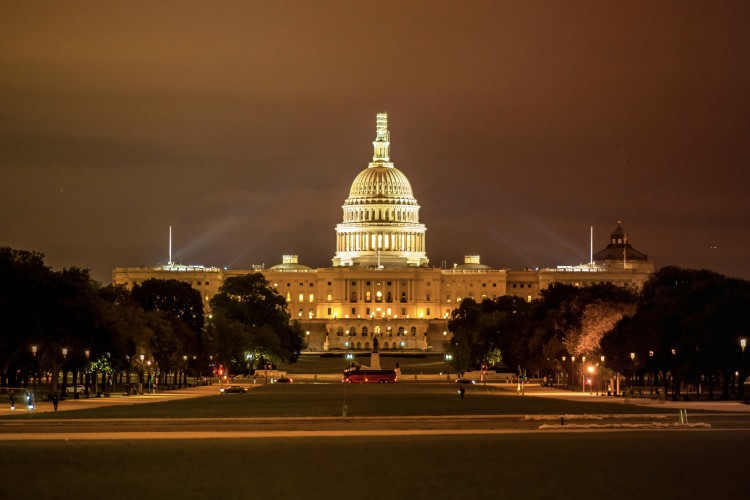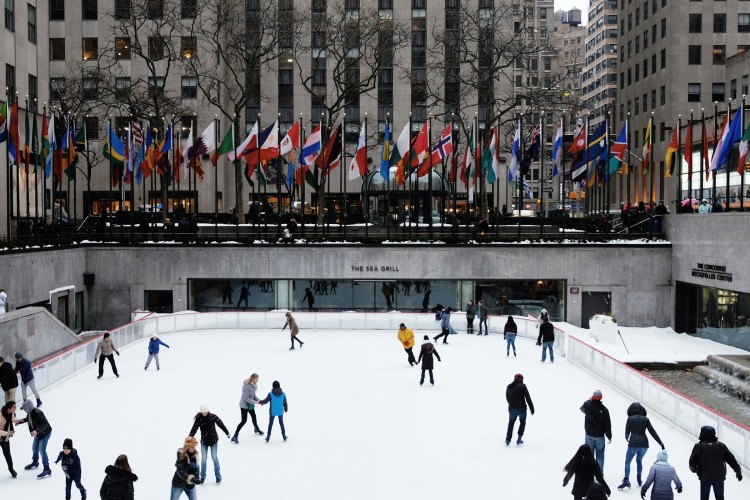Subtle But Not So Subtle: Systemic Racial Inequality, Disproportionate Minority Contact, and Mass Incarceration of Youth
This post was written by Mack McGhee. In the last 21 years, Mack has worked in various capacities dedicated to the goal of empowering, encouraging, and motivating youth and individuals to succeed, no matter their circumstance. He has served as Deputy Director at Youth Outreach Services, Corrections Administrator for TASC, Inc., Illinois Department of Corrections' Sheridan Program, and Director of Training for Cook County Juvenile Temporary Detention Center. Mack currently serves as Dean of Students for Urban Prep Academies for Young Men West Campus. MANY was honored to have Mack as one of our Connection 2014 speakers. See Mack's connection 2014 talk here.
When you say “DMC”, many think “Run”. In the past 27 years, since the federal government amended its Delinquency Prevention Act of 1974, creating a mandated requirement for the reduction of Disproportionate Minority Confinement (DMC), a lot of what we leaders have been doing is running from the problem. Only two counties, out of the hundreds the mandate targeted for improvement, ever met the requirements—little was done about the widespread implementation failure; all tell and no show. Easy to acknowledge, steeped in statistical fact, the problem of Disproportionate Minority Confinement (theoretically re-styled to include any recorded judicial contact) stares unwaveringly at those of us with the responsibility to address racial inequality in juvenile justice.
In my years at Cook County Juvenile Detention Center in Chicago, I saw a staff of 600 workers paid from a county budget (including state and federal funds) of $500 per day per young person to serve a rotating population of 300 young people at a time— $54 million annually to lock up kids for minor offenses or technical violations, for months at a time during the school year. Of course, anti-social behavior must be addressed, but the question is simple: do we want to create a system of lifetime disenfranchisement for at-risk populations in our country or prepare troubled youth to live fruitful and productive lives?
Through silence on the issue of Disproportionate Minority Contact, willful ignorance and dubious commitments to the status quo of mass incarceration, we answer in favor of a system that impacts non-white youth at 46 times the rate of white youth. DMC structurally locks young Black and Brown people out of employment opportunities and fair chances at educational attainment, thus stimulating mental health disparities, and ultimately, factualizing lives of poverty, discomfort, and danger. We are truly in the midst of something subtle and insidious, but not so subtle that we cannot see it: Disproportionate Minority Contact in 2015 is a clear manifestation of systemic racial inequality. We must enable youth to change transform their lives, instead of forcing them deeper into lives outside of the law.
Risk Factors: The Seen and Unseen Costs of Mass Incarceration
The present system is simply not a solution. With $600-$850 dollars a day on average spent on 100,000 youth in juvenile detention facilities nationwide, States are spending around $6 billion annually to keep young people locked up for a range of offenses, the majority of which are minor or non-violent offenses or even just the violation of probation itself. Ideally, the tax-payer is spending this money to increase the safety of their communities and to redress a young person’s willingness to participate in destructive and anti-social behavior, but what pans out is the exact opposite.
Cook County, home to notoriously crime-ridden Chicago, has the largest juvenile detention center in the country. In Chicago, at-risk youth (those raised in poverty, around substance or physical abuse, single-parent households, and those with mental health issues) begin to encounter judicial interventions as early as 13 years old. If there is any correlation or causal relationship, it is quite obviously not one which indicates that the mass incarceration of young people reduces crime. Chicago has an unemployment rate among Black boys of 92 percent, 9 points above the national average. Research shows that juvenile incarceration adversely affects a young person’s employment opportunities through the age of 25. Above all, participation in crime is often the result of financial strain and lack of preparation, whether academic or psycho-emotional, to pursue long-term opportunities.
In Chicago, there is a 57 percent high school graduation rate for African American males as compared to 81 percent among their White counterparts. Research indicates that students with judiciary contact struggle to finish school on time, if at all. Young people who are in and out of detention centers get pushed further into lives of crime and potentially of violence; they are also far more likely to end up harming themselves through reckless self-injury or intentionally through suicide, in response to a built up sense of hopelessness about themselves and their life prospects (over 30 percent of detained youth express suicidal intent or ideation). Taking these data into consideration, the mass incarceration of at-risk youth is not only a dismal solution; juvenile detention is itself a major part of the problem and is specifically a primary cause of the cyclical nature of minority disenfranchisement.
Locked-Up, Locked Out: The Growing Cycle and System of Generational Disenfranchisement
Young people who are consistently or frequently locked up grow up to be adults with similar paths. As the aforementioned effects of juvenile detention (unemployment and derailed paths to education attainment) persist and increase, the systemic pressures on a young person to earn outside of legal means increase and give basis to the unusually large numbers (85% 3-year recidivism for young people in Illinois) figures on detainee recidivism, which is particularly high among African American youth. Young people in the African American community are growing up with constant and disproportionate contact with the justice system in part because their home life is fractured by parental unemployment, poverty, and eventual parental incarceration. Without guidance, many young people are doomed to replicate.
The cyclical nature of incarceration flows, recidivism and minority disenfranchisement live in a causal relationship that can be traced to an old historical system, as Michelle Alexander discusses in The New Jim Crow: Mass Incarceration in the Age of Color Blindness. The problem of creating a cycle of hopelessly repetitive offense as a force in the disenfranchisement of formerly incarcerated persons through abbreviated opportunities and abrogated civil rights is an old problem and a generational one that requires a vast intervention. Mass incarceration as both a cause and a recurring result of racial inequality cannot simply be fixed by increased spending without permanently and deliberately redirecting the spending to the “outside” and not spending to increase law enforcement’s reach and the prison system’s capacity. Education, rehabilitation, and restoration have to be a new paradigmatic imperative for law-makers and government administrators alike. We have to begin to understand that when our solutions are simply grooming young people for prison as opposed to redirecting them toward lives of achievement and success, all of society is living in prison and our future is growing up behind bars.
A Way Through, Not A Way Out: Positively Proven Alternatives to Juvenile Delinquency
As society leaders, servants, and citizens alike, we have a way out of our prison problem, and it can very easily start with our youth and an assault on Disproportionate Minority Representation. Over the past 27 years, we have participated in the verbal and grammatical expansion of the concept of Disproportionate Minority Contact but have stood by and tolerated contradictory legislative defeats. During President Bill Clinton’s administration, the Violent Crime Control and Law Enforcement Act of 1994 expanded the Federal government’s and States government’s reach and abilities to detain minors, building detention centers for minors, eliminating educational programs in prisons and detention centers, and most importantly making it more difficult for formerly detained citizens to retain their rights or gain many kinds of employment upon release. A bi-partisan effort, the Violent Crime Control and Law Enforcement Act of 1994, was signed by President Clinton, without major contestation. The effects ring out disproportionately as African Americans make up approximately 14 percent of the population but over 38 percent of detainees in the United States today. For young people, the numbers are nearly three times worse, with African American youth making up 17 percent of the population between the ages of 12 and 17, but 58 percent of those young people that are detained at one time owing to racially selective enforcement practices; the arrest rate for robbery in 2008, for example, was 10 times higher for black youth than for white. Black kids are nearly 5 times more likely to be confined than their white counter parts, even though they only make up 10% of juveniles nationally since 1995. Overall, in the United States Black folks are detained at 4.6 times the rate of their white counterparts.
The cutting of educational programs through President Clinton’s 1994 “Crime Bill” for detained offenders mirrored broader legislative decisions to cut spending on education programs for the last 25 years. While schools have been closed nationwide in urban centers and primarily in Black and Brown communities, since 1994, the number of juvenile detention centers has reached as high as 3,000 facilities nationwide. We must re-authorize the Juvenile Justice and Delinquency Prevention Act (JJDPA) which has not been reauthorized since 2002 (advocacy groups such as the Center for Juvenile Justice are leading this important effort to push for reauthorization this year), amend Clinton’s Bill, and re-direct federal and state funds to preventative programs, not punitive ones.
If we redirect the increased funding of juvenile detention centers to schools, community centers and organizations, and jobs programs for young people in under-served communities, the data indicates that we will not need bigger prisons, but schools with much larger capacity, as kids would be spending more time in the classroom than behind bars. The Justice Policy Institute reported research by the Washington State Institute for Public Policy that shows that for every dollar we spend on the multi-systemic interceptive programs that schools and non-profits can provide, we get a socially productive value nearly 7 times that of the dollar spent on detaining a youth. Accordingly, it can be argued that if we take the 6 billion dollars spent annually at the state level and redirect it to schools and community organizations' capacities to provide parental counseling, therapeutic probationary periods, job readiness programs, and long-term counseling for troubled youth, you will avoid the systemic and cyclical discarding of these youth and will get at least $42 billion annual worth of community value in safety, educational attainment, job creation, and reduced long-term healthcare costs—all of which, research shows leads to longer, healthier, and safer lives. Though the solution is simple and the roles we may play in changing our communities lay plainly in front of us, the task of getting entire communities and their leaders on board is difficult. We must invest in mentorship of the youth in our community while simultaneously tirelessly pushing our lawmakers to rethink what justice really means for the futures of our young people and the lives of our communities.
The full content of Mack's Connection 2014 presentation, along with presentations from other speakers. can be found here.


